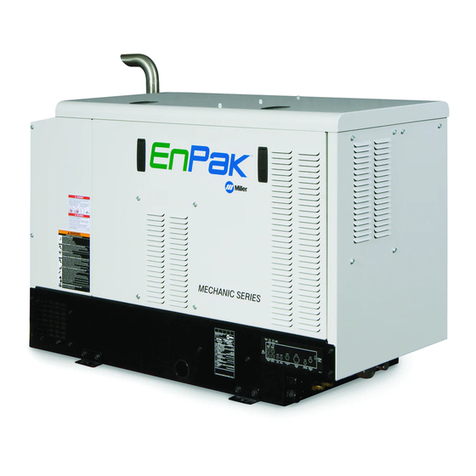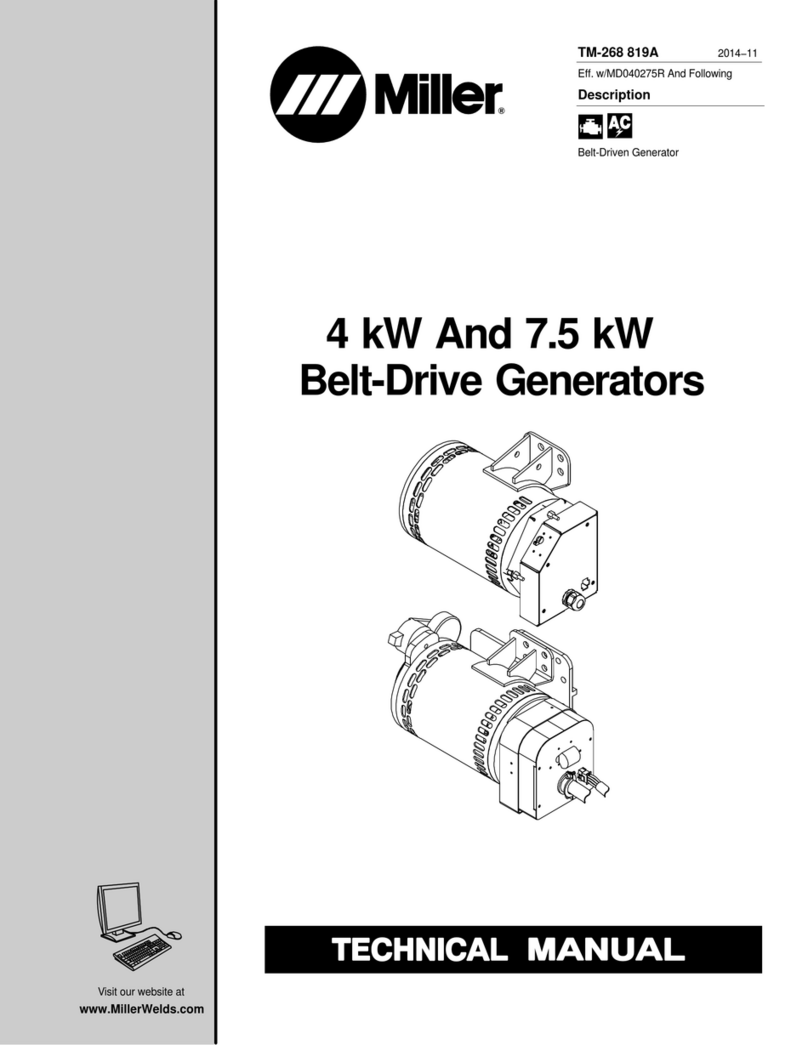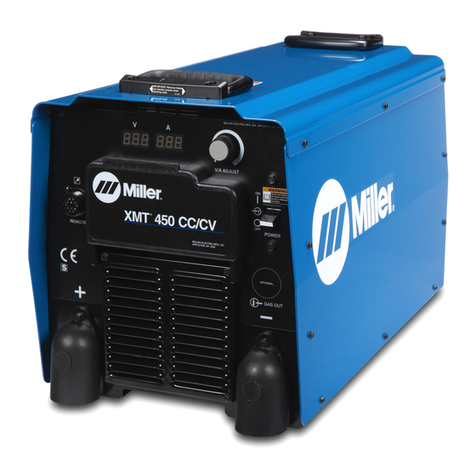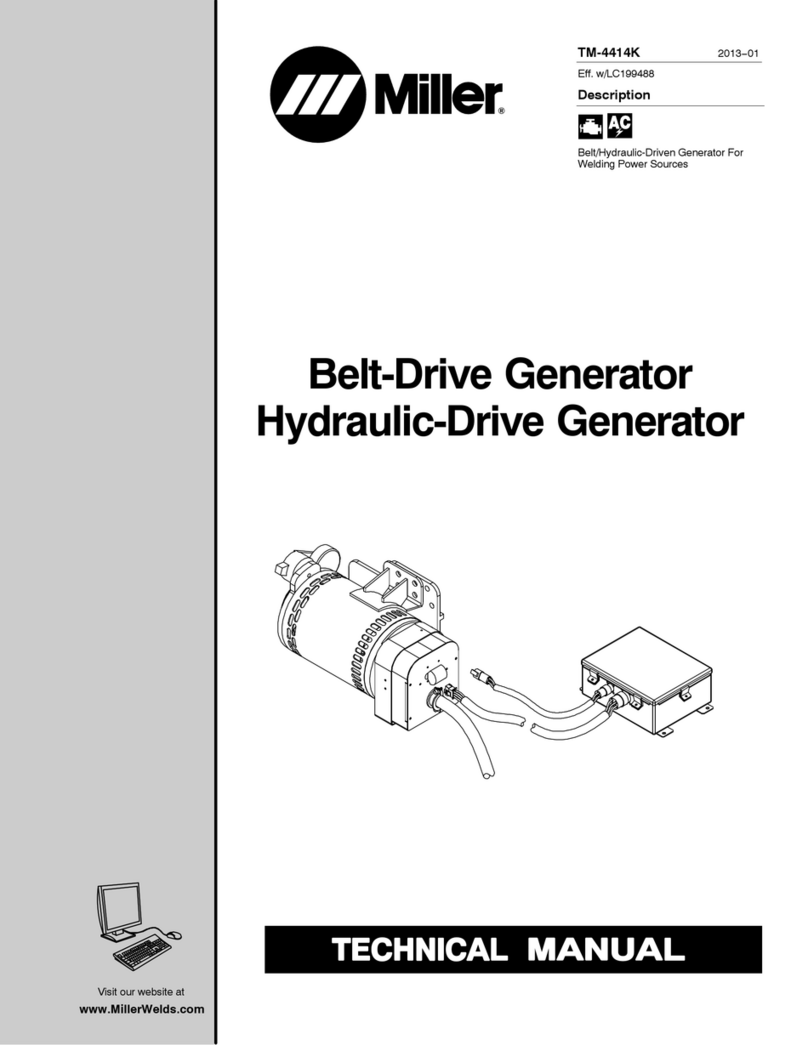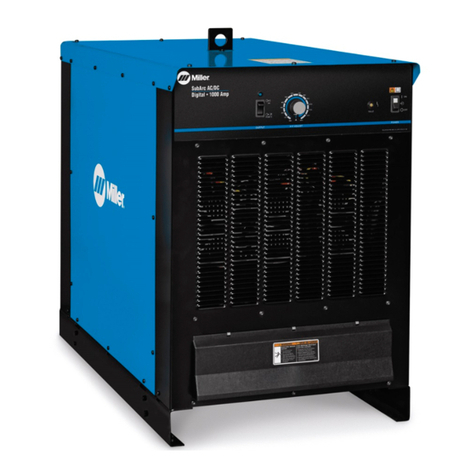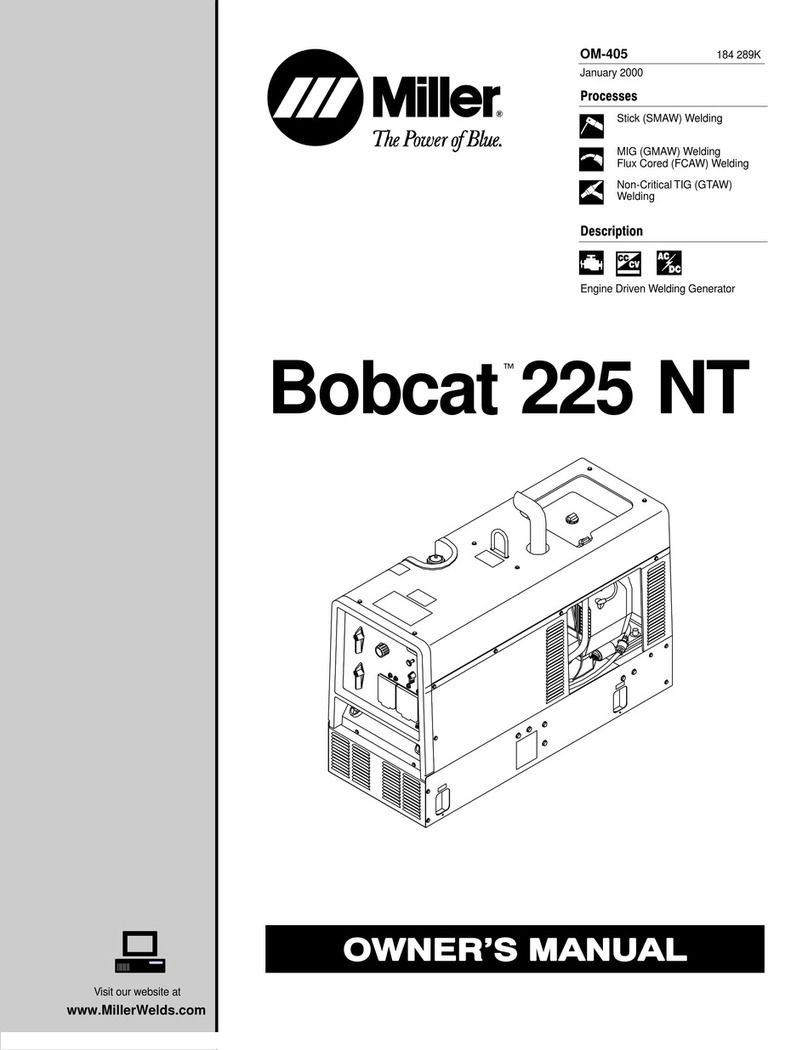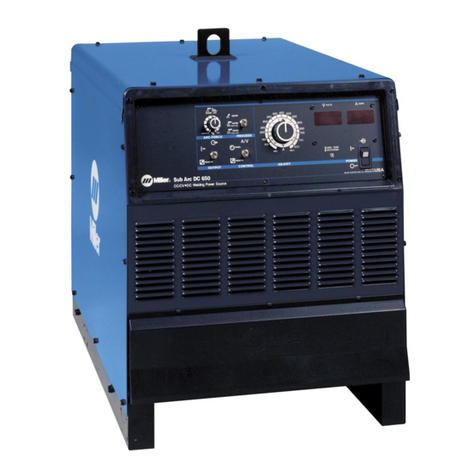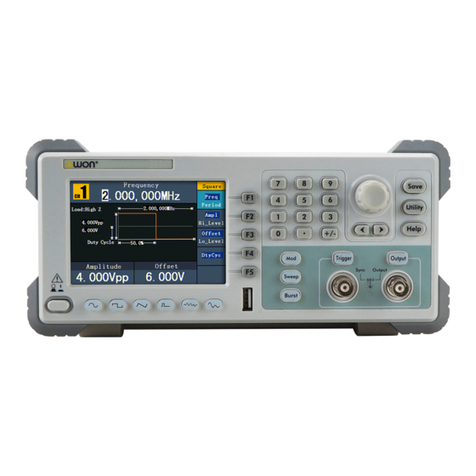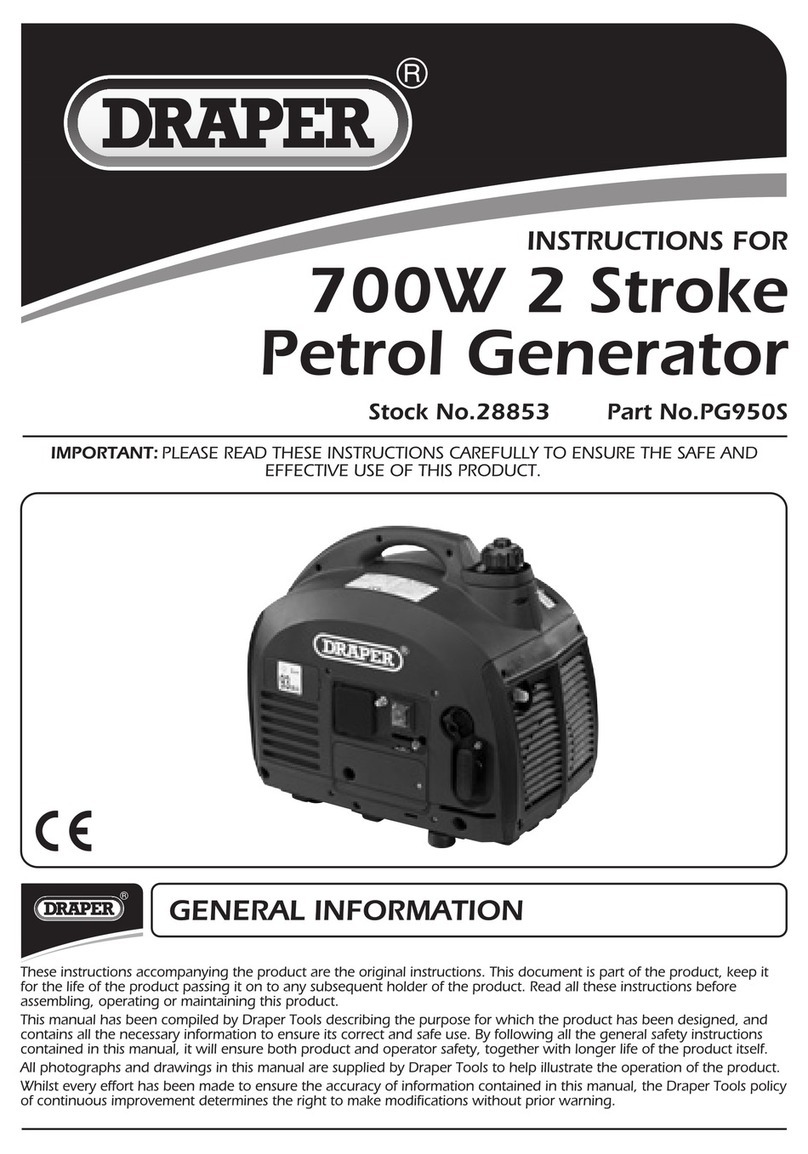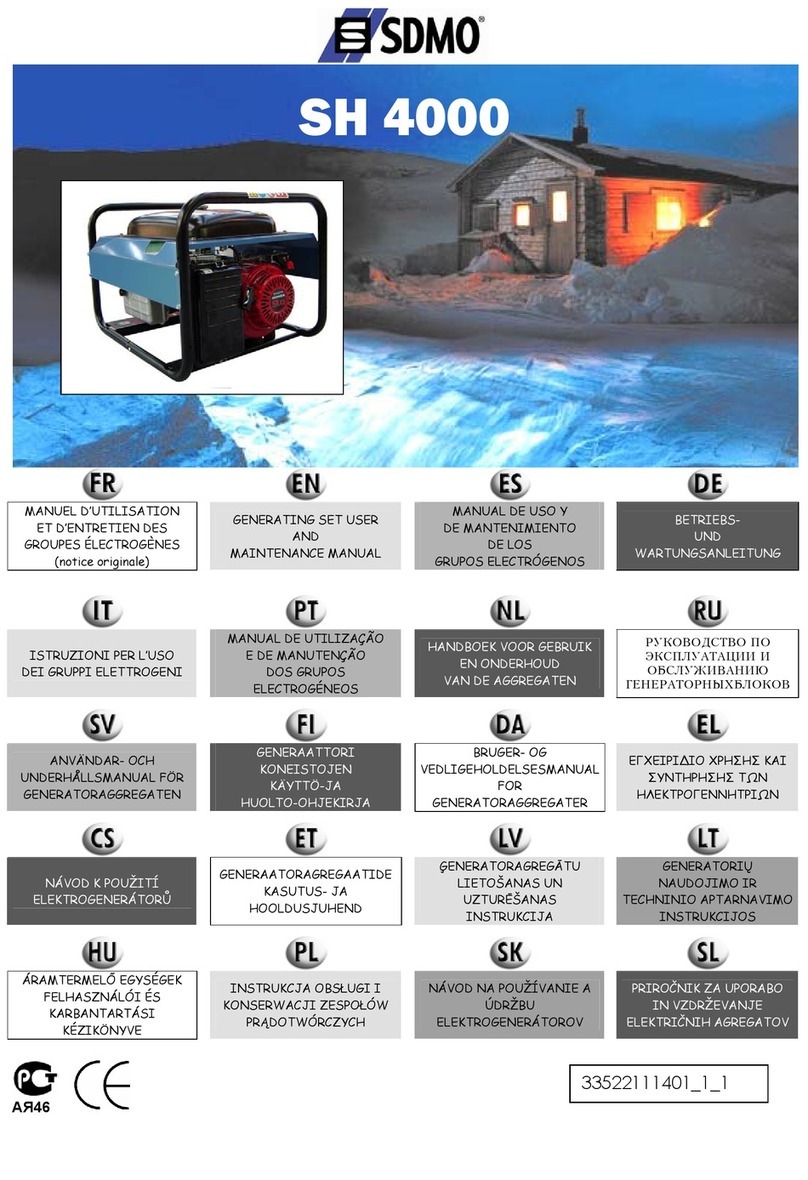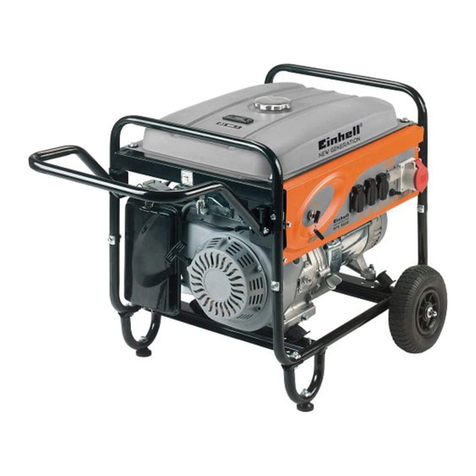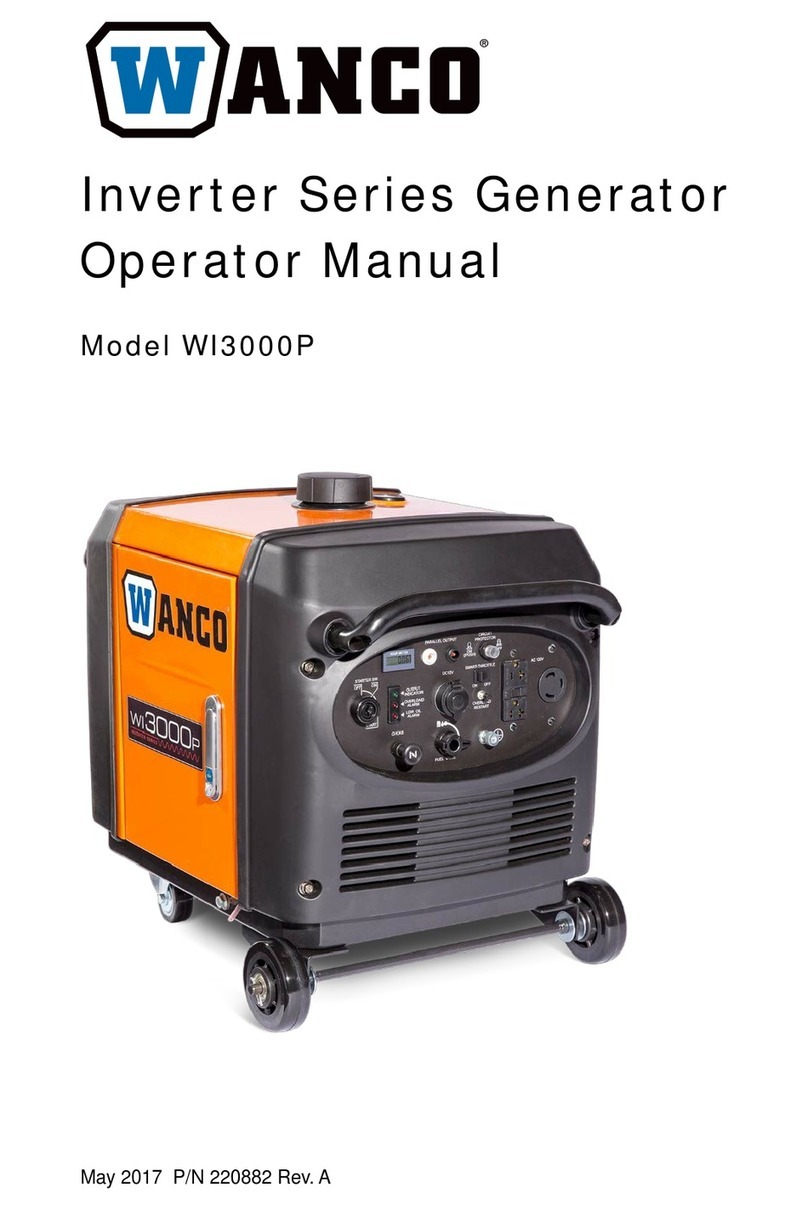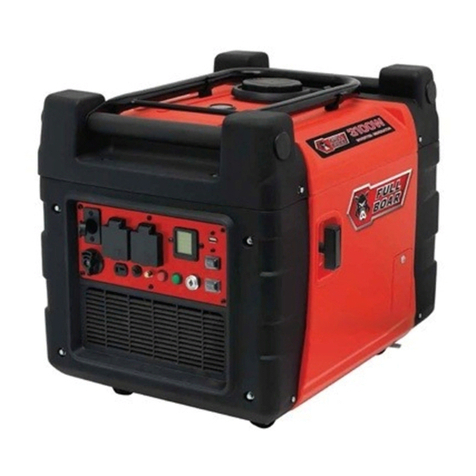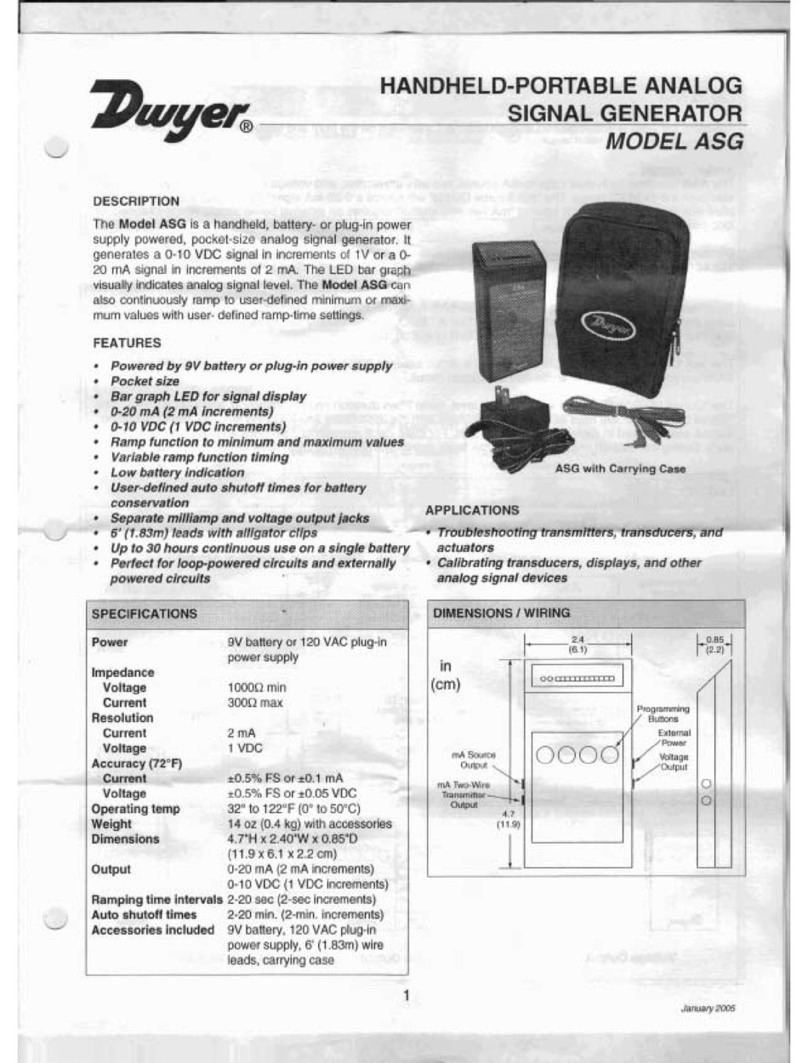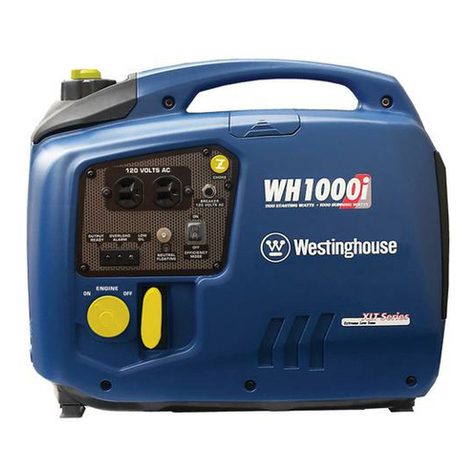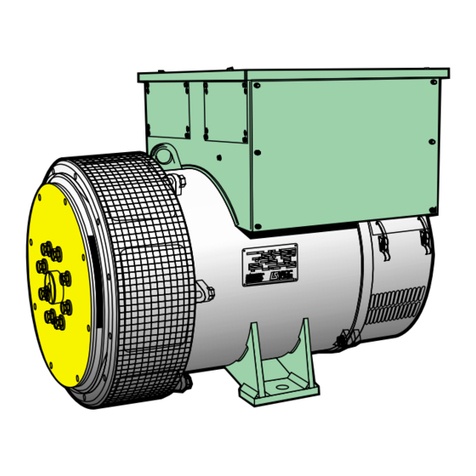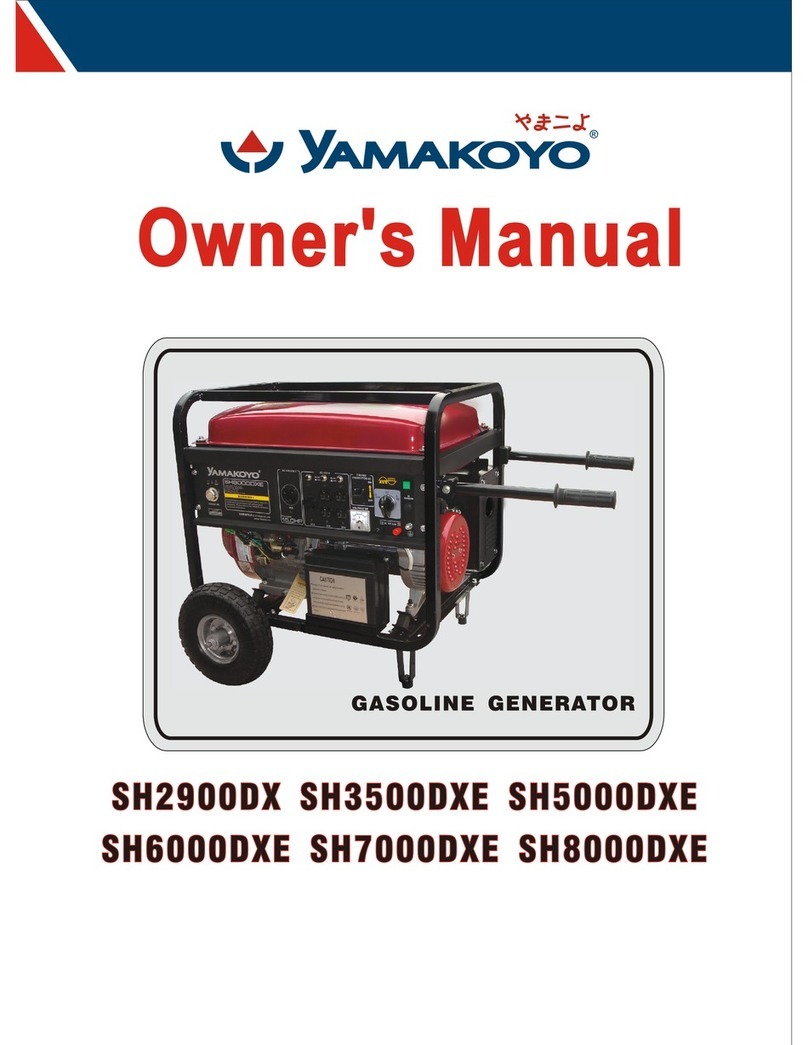
OM-156 368 Page 1
SECTION 1 – SAFETY PRECAUTIONS - READ BEFORE USING
rom _nd_5/97
1-1. Symbol Usage
Means Warning! Watch Out! There are possible haz-
ards with this procedure! The possible hazards are
shown in the adjoining symbols.
YMarks a special safety message.
.
Means “Note”; not safety related.
This group of symbols means Warning! Watch Out! possible ELEC-
TRIC SHOCK, MOVING PARTS, and HOT PARTS hazards. Con-
sultsymbolsandrelatedinstructionsbelowfornecessaryactionsto
avoid the hazards.
1-2. Arc Welding Hazards
YThe symbols shown below are used throughout this manual
to call attention to and identify possible hazards. When you
seethesymbol,watchout,andfollowtherelatedinstructions
to avoid the hazard. The safety information given below is
only a summary of the more complete safety information
found in the Safety Standards listed in Section 1-5. Read and
follow all Safety Standards.
YOnly qualified persons should install, operate, maintain, and
repair this unit.
YDuringoperation,keepeverybody,especiallychildren,away.
ELECTRIC SHOCK can kill.
Touching live electrical parts can cause fatal
shocks or severe burns. The electrode and work
circuit is electrically live whenever the output is on.
The input power circuit and machine internal
circuits are also live when power is on. In semiautomatic or
automaticwire welding,thewire,wirereel, driverollhousing,andall
metalpartstouchingtheweldingwireareelectricallylive.Incorrectly
installed or improperly grounded equipment is a hazard.
DDo not touch live electrical parts.
DWear dry, hole-free insulating gloves and body protection.
DInsulateyourselffromworkandgroundusing dry insulating mats
or covers big enough to prevent any physical contact with the
work or ground.
DDonotuseACoutputindampareas,ifmovementisconfined,orif
there is a danger of falling.
DUse AC output ONLY if required for the welding process.
DIf AC output is required, use remote output control if present on
unit.
DDisconnectinput powerorstop enginebeforeinstallingorservic-
ing this equipment. Lockout/tagout input power according to
OSHA 29 CFR 1910.147 (see Safety Standards).
DProperly install and ground this equipment according to its Own-
er’s Manual and national, state, and local codes.
DAlways verify the supply ground – check and be sure that input
powercordgroundwireisproperlyconnectedtoground terminal
in disconnect box or that cord plug is connected to a properly
grounded receptacle outlet.
DWhen making input connections, attach proper grounding con-
ductor first – double-check connections.
DFrequently inspect input power cord for damage or bare wiring –
replace cord immediately if damaged – bare wiring can kill.
DTurn off all equipment when not in use.
DDonotuseworn,damaged,undersized,orpoorlysplicedcables.
DDo not drape cables over your body.
DIf earth grounding of the workpiece is required, ground it directly
with a separate cable – do not use work clamp or work cable.
DDonottouchelectrodeifyouareincontactwiththework,ground,
or another electrode from a different machine.
DUseonlywell-maintainedequipment.Repairorreplacedamaged
parts at once. Maintain unit according to manual.
DWear a safety harness if working above floor level.
DKeep all panels and covers securely in place.
DClampworkcable withgoodmetal-to-metalcontacttoworkpiece
or worktable as near the weld as practical.
DInsulateworkclampwhennot connectedtoworkpieceto prevent
contact with any metal object.
DDo not connect more than one electrode or work cable to any
single weld output terminal.
Arc rays from the weldingprocess produce intense
visible and invisible (ultraviolet and infrared) rays
that can burn eyes and skin. Sparks fly offfrom the
weld.
ARC RAYS can burn eyes and skin.
DWearaweldinghelmetfittedwithapropershadeoffiltertoprotect
your face and eyes from arc rays and sparks when welding or
watching(seeANSIZ49.1andZ87.1listedinSafetyStandards).
DWear approved safety glasses with side shields under your hel-
met.
DUseprotectivescreensorbarrierstoprotectothersfromflashand
glare; warn others not to watch the arc.
DWearprotectiveclothingmadefromdurable,flame-resistantma-
terial (wool and leather) and foot protection.
Welding produces fumes and gases. Breathing
these fumes and gases can be hazardous to your
health.
FUMESAND GASES canbe hazardous.
DKeep your head out of the fumes. Do not breathe the fumes.
DIf inside, ventilate the area and/or use exhaust at the arc to re-
move welding fumes and gases.
DIf ventilation is poor, use an approved air-supplied respirator.
DRead the Material Safety Data Sheets (MSDSs) and the
manufacturer’s instructions for metals, consumables, coatings,
cleaners, and degreasers.
DWorkinaconfinedspaceonlyifitiswellventilated,orwhilewear-
inganair-suppliedrespirator.Alwayshaveatrainedwatchperson
nearby. Weldingfumes andgases candisplace airand lowerthe
oxygen level causing injury or death. Be sure the breathing air is
safe.
DDo not weld in locations near degreasing, cleaning, or spraying
operations. The heat and rays of the arc can react with vapors to
form highly toxic and irritating gases.
DDo not weld on coated metals, such as galvanized, lead, or cad-
mium plated steel, unless the coating is removed from the weld
area, the area is well ventilated, and if necessary, while wearing
an air-supplied respirator. The coatings and any metals contain-
ing these elements can give off toxic fumes if welded.
